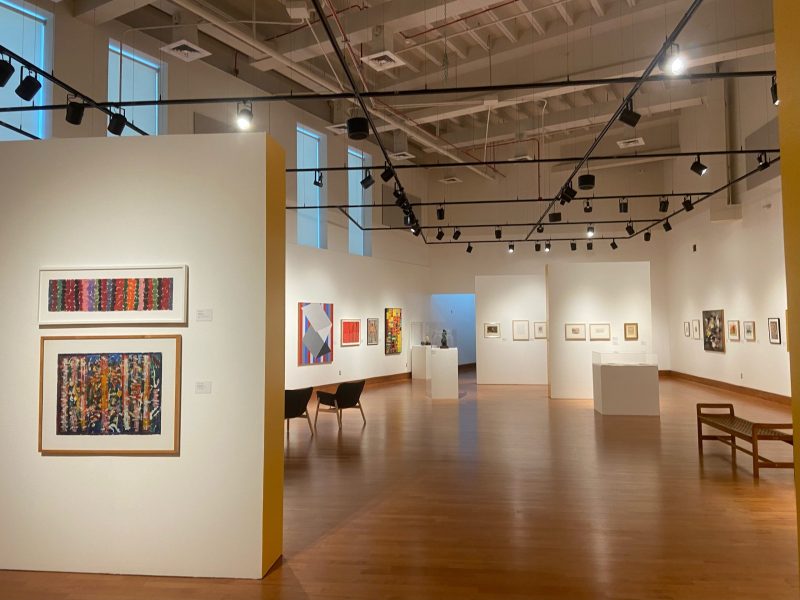A girl stands hardly upright, one hand resting on a distended belly, the other pushing cotton into her mouth. Her eyes are blank white; she looks barely alive.
In fact, she is. Cotton Eater II is one of the prints presented at Alison Saar’s most recent exhibit at the National Museum of Women in the Arts. The girl in the print is starving, consuming cotton to feel full. The image is based off of the lotus eaters in The Odyssey who consumed a narcotic fruit that rendered them apathetic.
Here, however, the girl consumes cotton to reference the slave trade and symbolize the government’s mistreatment of and empty promises to the poor.
Saar, a Los Angeles-born artist, has had sculpture exhibits around the country. This is a small exhibit, and there are only a few sculptures. The walls surrounding them lean in heavy with multiple jarring prints. The union of the two different art forms dramatizes the exhibit, allowing the viewer to see her work from different angles.
While growing up biracial, she explained in an interview with WGBH News, a Boston public radio station, she has often been mistaken as white and in high school she didn’t feel that she belonged in one “category.”
Saar often brings to life paintings modeled after her sculptures. Her print work relies on vibrant colors, mostly deep ocean blues and honey yellows operating hand-in-hand with rich symbolism.
She dissects history, printing on materials such as repurposed cotton cloth and sugar sack fabric that likely set a symbolic backdrop of slave trade in the Americas.
A piece that exemplifies her focus on femininity intertwined with the African Diaspora is a life-sized naked woman hanging upside down. Sweeping Beauty, along with Cotton Eater II features a woman with a bulging stomach and white, empty eyes.
In Toni Morrison’s forward to The Bluest Eye, she describes the aftermath of Western (white) beauty standards: “I focused … on how something as grotesque as the demonization of an entire race could take root inside the most delicate member of society: a child; the most vulnerable member: a female.”
Reminiscent of this theme is Mirror, Mirror: Mulatta Seeking Inner Negress, a series of two nearly identical images that portray a light-skinned figure with her back to the audience holding up a mirror where onlookers can see her dark reflection. This questions how she sees herself, and how society influences how she thinks she should look.
With a quiet barrage of symbolic images, Saar beckons viewers of all backgrounds to question the present and the searing pain of history that echoes through race conversations today.



